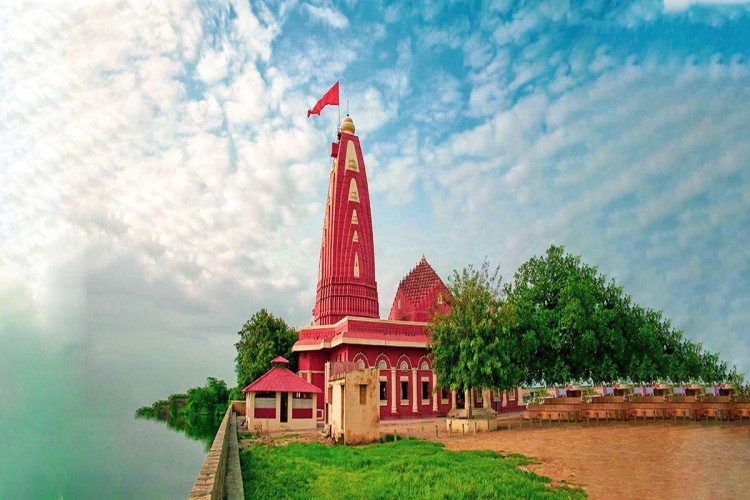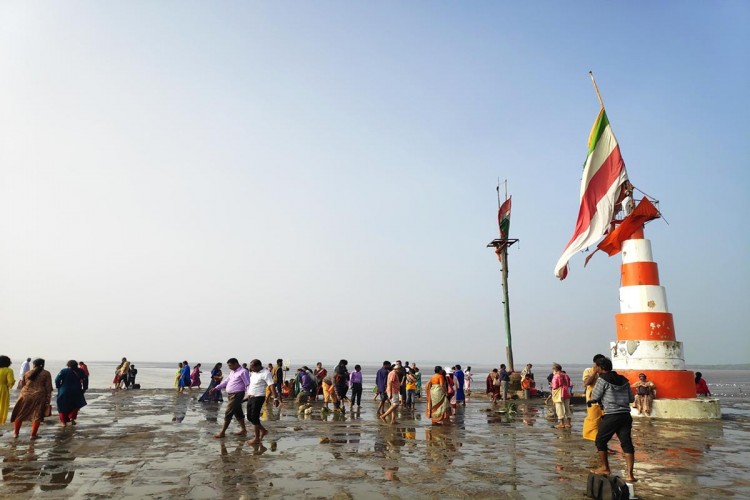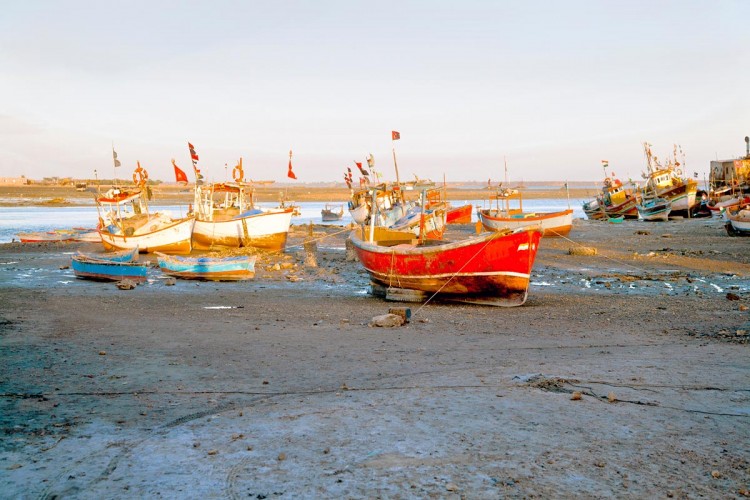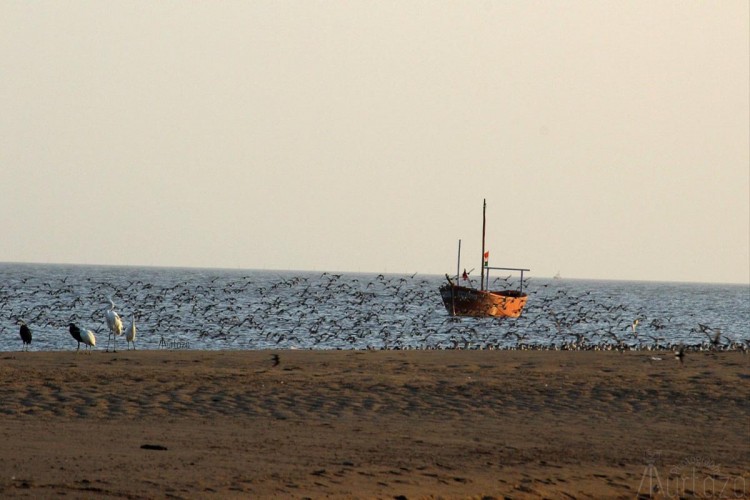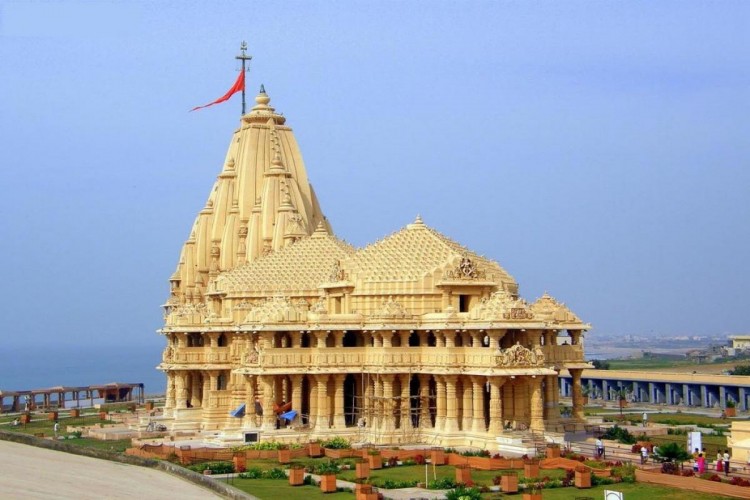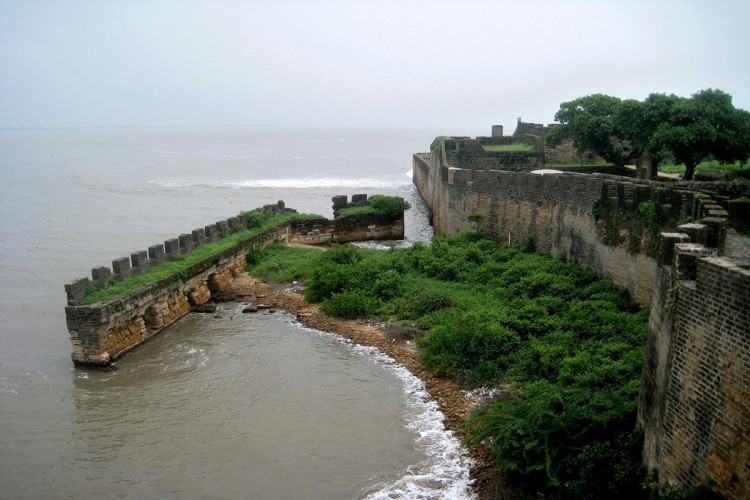About City
Dwarka
"The home of Lord Krishna"
Located on the western tip of the Saurashtra peninsula in Gujarat, Dwarka is believed to be the capital city of Lord Krishna's kingdom. Known as Devbhoomi Dwarka, Dwarka boasts of being the only city that is a part of both Char Dham (four principal holy places) and also Sapta Puris (seven sacred cities) mentioned in the Hindu religion. Dwarka was a part of the ancient kingdom of Krishna and Nageshwar Jyotirlinga Temple, one of the 12 Jyotirlingas, is also located in Dwarka. The beachside and the seashores are an added tourist attraction.
Legend has it that the city was once engulfed by the sea and recent excavations reveal that a city did exist here. The name Dwarka translates to dwar meaning 'door' and ka meaning 'moksha' meaning the ‘door to salvation'.
Places To Visit In Dwarka
1. Dwarkadhish Temple
Dwarkadhish Temple also known as the Jagat Mandir, is a Chalukya styled architecture, dedicated to Lord Krishna. The town of Dwarka has its history dated back to the Kingdom of Dwaraka in Mahabharata. The five storied main shrine is grand and marvelous in itself constructed of limestone and sand. The 2200-year-old architecture, is believed to be built by Vajranabha, who constructed it over the land reclaimed from the sea by Lord Krishna. The temple showcases intricate sculptural detailing done by the ancestral dynasties that ruled the region and the black magnificent idol of Lord Krishna. There are other shrines within the temple which are devoted to Subhadra, Balarama and Revathy, Vasudeva, Rukmini and many others.
The devotees are expected to take a dip in the Gomti river before proceeding into the temple through the Swarg Dwar. The eve of Janmashtmi is the most special occasion in any Krishna temple, the Dwarkadhish temple is adorned by thousands of devotees chanting prayers and rituals. The shrine is a hive of colours, voices and faith transforming itself into inner silence and sanctity.
2. Nageshwar Jyotirlinga Temple
One of the 12 famous self-existent temples, Nageshwara Jyotirlinga Temple too houses a curious myth about its origin. The giant, beautiful and artistic statue of Lord Shiva mesmerizes tourists and pilgrims alike with its aesthetic appeal. Unlike other Nageshwar Temples, the statue or the Linga here faces south. A major highlight of Nageshwar Temple is the massive 80 feet tall statue of Lord Shiva. The temple itself is characterised by typical Hindu architecture. The Nageshwar Shiva Linga is made up of stone, known as Dwarka Shila, having small chakras on it. It is in the shape of 3 mukhi Rudraksha.
3. Beyt Island
Located around 30 km from the main town of Dwarka Beyt Dwarka is a small island and was the main port in the region before the development of Okha. While the island is enclosed by a few temples, white sand beach and coral reefs, the beach is also popular among tourists for its marine life, sea excursions, camping and picnics.
4. Dwarka Beach
Along the Arabian Sea coast, Dwarka Beach is a good place to relax in the evenings. Popular among both the locals and tourists, Dwarka Beach is located quite close to the main temples in town.
5. Rukmani Temple
A small structure is an important shrine dedicated to Krishna's beloved consort, Rukmani Devi. Not as majestically gigantic , this shrine is an architectural masterpiece in itself. The Hindu mythical story behind this temple begins with Rukhmini Devi and her husband Lord Krishna, picking up the sage Durvesha for dinner. On the way, Rukhmini Devi stopped to quench her thirst at the Ganges, with the help of her husband. Known to be short-tempered, Durvesha Muni was quite enraged when she did not offer him any water. Thus he summoned Rukhmini Devi to be separated from Lord Krishna. Therefore, her temple lies at the outskirts, while Lord Krishna's temple is within the Dwarka city.
6. Lighthouse
The tower, 43m in height was inaugurated on 15th July 1962. Tourists can enjoy the panoramic view of the sunset.
7. Gomti Ghat
If the holy scriptures are to be believed, the Gomti River is none other than the Ganges, descending directly from heaven. The most sought after spots out of the various shrines and ghats this is the place where the river meets the mighty ocean.
8. Gopi Talav
Legend has it that this is the lake where Krishna used to entice his Gopis (young female inhabitants) with his youthful pranks and romantic nature. About 20km , the lake is surrounded by sandal like yellow sand which is used by the devotees to make tilaks on their bodies. It is quite a pretty sight.
9. Bhadkeshwar Mahadev Mandir
Bhadkeshwar Mahadev Mandir, dedicated to Lord Shiva, is an ancient temple, some 5000 years old, which was built around a self-manifested Shivaling found in the Arabian Sea.
10. Gita Temple
Built by the industrialist family of Birla in 1970, it is constructed using white marble resulting in a magnificent and awe inspiring structure. The temple was made to capture and preserve the teachings and values of the Bhagavad Gita, the religious book of the Hindus.
11. Sudama Setu
Sudama Setu Bridge is a stunning suspension bridge built for pedestrians to cross River Gomti. The bridge was named after Sudhama, Lord Krishna's childhood friend. It was inaugurated by Anandiben Patel, the CM of Gujarat in 2016.
12. ISKCON Dwarka
Located on Devi road, the ISKCON Temple in Dwarka is yet another manifestation of the Krishna Consciousness. Housing idols of Lord Krishna and Goddess Radha draped in rich attires and ornated in flowers, this is an entirely stone-built temple.
13. Swami Narayan Mandir
Located very close to the beautiful seashore and the Dwarkadish temple, Swami Narayan Mandir is a shrine dedicated to Lord Swaminarayan, an avatar of Lord Vishnu. The shrine is a relatively new structure, with intricate architecture expressed through sculptures and embossed wall work.
14. Dunny Point
Located at Dwarka Beyt, Dunny Point is a mesmerising island-like spot and a great place for water-based activities and bird watching. This uninhibited point is an eco-tourism site also offers an impressive marine camping and safari option along its coral-embedded water site.
How to Reach Dwarka
The nearest airport is Jamnagar, about 137 km away from Dwarka City. Dwarka has its own railway station, trains connecting Dwarka to all major cities (Jamnagar, Ahmedabad, Vadodara, Surat, Mumbai, Goa, etc.) Dwarka is very well connected by road as well.
Best time to visit Dwarka
The ideal time to visit Dwarka is from November till the last of February when the city experiences cold winters. Nonetheless, if you specifically want to participate in the festivities of Dwarka's grandly celebrated Janmashtami Festival, visiting the town during August and September will be eventful. Hence, September to March are the best months to visit Dwarka. However, the city is equally enchanting throughout the year.
Food of Dwarka
There aren't many lavish restaurants in Dwarka. However, the ones that it houses serve delicious Gujarati, North-Indian and Chinese food. An elaborate Gujarati thali is a must, while here. Roti, Dal or Kadhi, Rice and Vegetable Curries make up this mouth-watering platter. You can also try out the famous Khichdi . Other than these, do try out the popular Gujarati snacks such as Khamman Dhokla, Khandvi, Thepala, Khakhra, Hahdwoh as well as the widespread and refreshing Lassi, Buttermilk and Chaas.
Dwarka Tour Packages
About Dwarka Tourism: Dwarka in Gujarat is said to be the capital of Lord Krishna’s kingdom and is therefore called the “home of Lord Krishna.” The only city to be part of both the Char Dham and Sapta Puris, Dwarka is known for its sacred sites and a shoreline that features few beaches.
The Dwarkadhish Temple, dating back over 2,500 years, is one of the city’s prime attractions admired for its Chalukya style of architecture, its intricate carvings as well as its mesmerising five-storey shrine. The Nageshwar Jyotirlinga, one of India’s 12 Jyotirlingas, another one of the city’s numerous wonders, is renowned for its 80 feet tall statue of Lord Shiva.
Some of the other temples you must visit in Dwarka include the Rukmini Devi Temple, Gita Temple and Swaminarayan Mandir. Also, see Gopi Talav, a calm lake where Lord Krishna supposedly performed “raas” for the Gopis. The serene Gomti Ghat is another must-visit place alongside Sudama Setu, which pedestrians use to cross the Gomti River.
Besides holy sites, Dwarka is also famous for the Dwarka Beach along the Arabian Sea coast. You can watch the sunset, admire the coral reefs, eat at a food stall or go looking for seashells. Dwarka Lighthouse also attracts crowds of tourists who visit the site for its architecture and views of the setting sun.
About 30km from the city is Beyt Island, where you can go beach camping, dolphin spotting, picnicking, etc. Situated at the mouth of the Gulf of Kutch, this island with its white-sand beaches and coral reefs is supposedly where Lord Krishna stayed when he was the king of Dwarka. Visit Dwarka between November and February when the weather is ideal for sightseeing. 1-2 days are sufficient to explore the city. You can stay in guesthouses, hotels, resorts etc.
Dwarka tour packages also include nearby destinations like Somnath, Diu and Ahmedabad. Somnath, meaning “Lord of the Moon,” is one of the 12 Jyotirlingas renowned for the Somnath Temple. You must visit the Paanch Pandav Gufa, Suraj Mandir and Laxminarayan Temple. Somnath Beach, great for relaxing, jogging and sunset watching, and Chorwad Beach are also famous here.
Ahmedabad, the state’s capital, is synonymous with the Sabarmati Ashram, where Mahatma Gandhi resided with his wife. Here you would also find the Statue of Unity which commemorates Vallabhai Patel and is the world’s tallest statue, as well as Dada Hari Vav and Rani ki Vav, which are prominent stepwells. In addition, a walk across the green promenades and parks on the Sabarmati Waterfront would undoubtedly be calming.
Once a Portuguese colony, Diu is famous for its beaches; Nagoa Beach, Ghoghla Beach and Gomtimata Beach are ideal for relaxing, sunset watching, parasailing, jet skiing, etc. Catch a glimpse of the setting sun from Sunset Point or visit Diu Fort, Naida Caves and Diu Museum. We have numerous customisable and affordable Dwarka travel packages for a remarkable trip!

